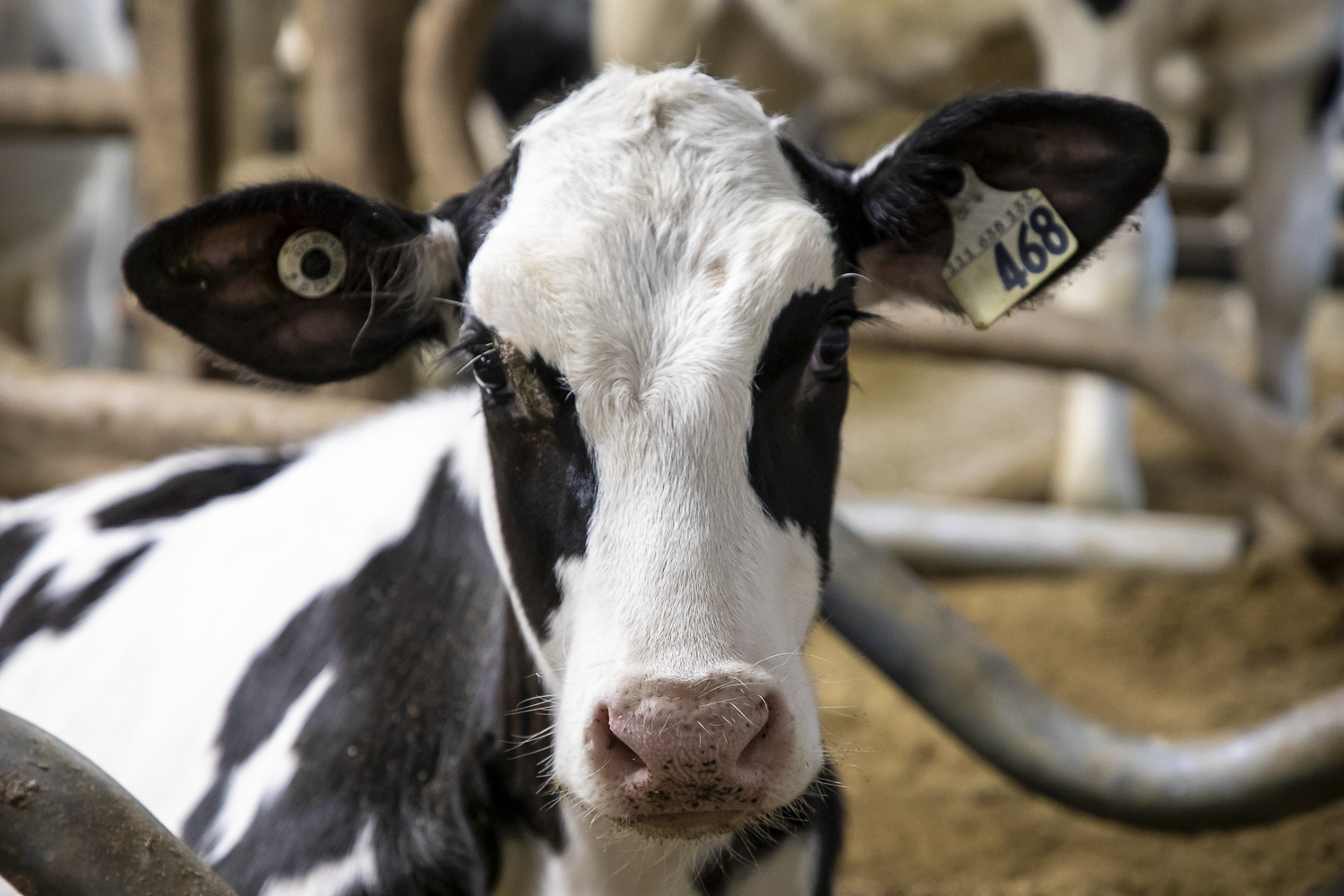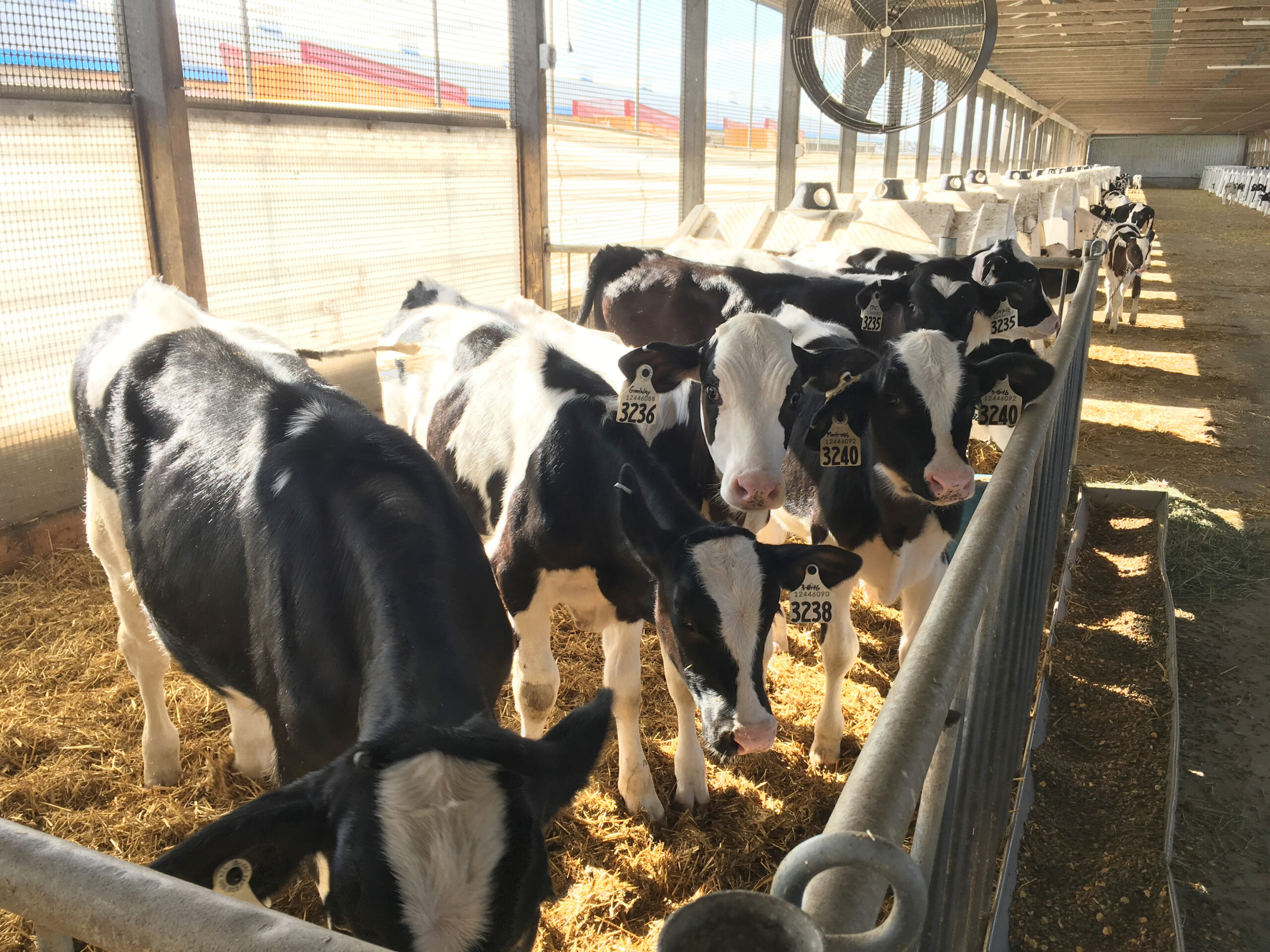New Lactanet Tools to Manage Undesirable Genes
- April 17, 2024
More and more producers are raising concerns about undesirable genetic conditions and haplotypes, emphasizing the need for effective management strategies within their breeding programs. Many of these can be appropriately managed by avoiding mating sires and dams that are carriers of such genetic abnormalities. However, as the number of genetic recessives and haplotypes increases, it is becoming harder for producers to easily check them all at once when making mating decisions. For example, there are six undesirable genetic conditions and six haplotypes affecting fertility in the Holstein breed alone.
Recognizing the significance of this challenge and to address producer concerns, Lactanet recently introduced two new tools to further assist in managing mating decisions to reduce the impact of undesirable genes in their herd. The tools outlined below utilize published gene test results and Carrier Probability values for the common genetic conditions and haplotypes within each breed. To date, the dairy industry has made substantial strides in identifying and managing genetic abnormalities. Let’s continue this trajectory with the help of Lactanet services!
1. Pop-up Window
A new pop-up window containing Carrier Probability values is now featured within each animal’s Genetic Evaluation Summary, Inbreeding Calculator, and Pedigree pages on the Lactanet website. This new tool was developed in response to a 2021 Lactanet Resolution and provides users with a list of the undesirable genetic conditions and haplotypes known in each breed, their respective abbreviation or code, and the animal’s Carrier Probability values. If the animal has a known gene test result for the genetic condition the Carrier Probability will be either 0% or 100% to reflect their “Free” or “Carrier” result. For other results, the displayed value will range between 1% and 99%. By integrating this feature into pre-existing Animal Query and Inbreeding Calculator tools, users can easily access Carrier Probability values and make more informed breeding decisions. To view the pop-up window, simply hover over the blue circle with three dots at the end of the list of genetic condition codes displayed below the animal’s name.
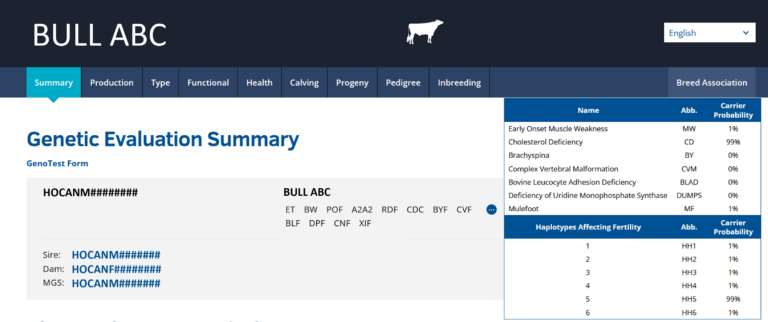
2. Inbreeding Calculator
The Inbreeding Calculator has been available on the CDN/Lactanet “Genetics” website for over 25 years and is frequently used by breeders when making mating decisions. Whether users select one female and one male, a list of females and one male or vice versa, or lists of multiple females and males, the output provides the pedigree-based inbreeding level and Parent Averages for the progeny that would result from each potential mating. This allows producers to effectively control inbreeding levels of future heifers in their herd.
To also help manage the spread of known undesirable genes, Lactanet has added a new feature to the Inbreeding Calculator. This feature considers known genetic conditions and haplotypes for the selected animal and identifies potential mates that have a risk of producing a pregnancy or calf affected by the undesired genes. This makes Lactanet’s Inbreeding Calculator the first on-line tool of its kind that will help control future inbreeding levels in your herd while effectively avoiding genetic abnormalities. The Inbreeding Calculator functionality will remain the same, but users will now see a new column with the header “GC”, for “Genetic Conditions”, on the Inbreeding Report. For the selected mating animal, this column contains a list of the genetic conditions for which they have a Carrier Probability of 25% or higher. For example, the image below shows that “Sire A” has a Carrier Probability higher than 25% for Holstein Haplotype 5 (HH5) and Muscle Weakness (MW).
For the list of potential mates, a mating risk calculation is done to reflect the probability that the resulting pregnancy or calf will be affected by at least one of the undesirable conditions or haplotypes. As such, for the given animal in the top section (i.e.: Sire A), the “GC” column beside the list of potential mates in the lower section (i.e.: Cow 1, 2, 3, …) reflects the mating risk by either remaining blank or showing a warning sign or stop sign:
- Blank Column: The mating risk is below 1%. This is the case for Cow 1, 3, 4 and 6 in the example.
- ⚠ Producers should proceed with caution with the mating, as the probability of producing an affected pregnancy or calf is estimated to be at least 1% but less than 6.25%. This is the case for Cow 5 in the example.
- ⯃ It is not recommended to proceed with the mating as the probability of producing an affected pregnancy or calf is 6.25% or higher. This is the case for Cow 2 in the example.
Users can also view the pop-up window described above for both the Animal and the Potential Mates by hovering over each animal’s name.
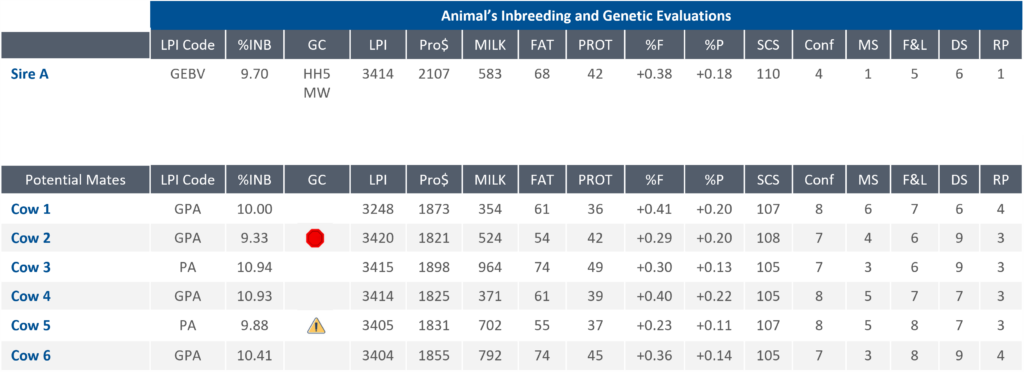
The tolerance thresholds of possible mating risks given the sire and dam Carrier Probabilities can be found in Figure 1. The red portion corresponds to mating risks of 6.25% or higher where a stop sign would be shown, the yellow portion corresponds to mating risks between 1% and 6.25% where a caution sign would be shown, and the white portion means the mating risk is below 1% and the column would be left blank. For example, if a sire is a known carrier for a genetic condition (i.e.: Carrier Probability of 100%) and the dam has a Carrier Probability for that same genetic condition of 50% then the resulting pregnancy or offspring has a 12.5% chance of being affected by the genetic condition.
Figure 1: Mating Risks Tolerance Thresholds
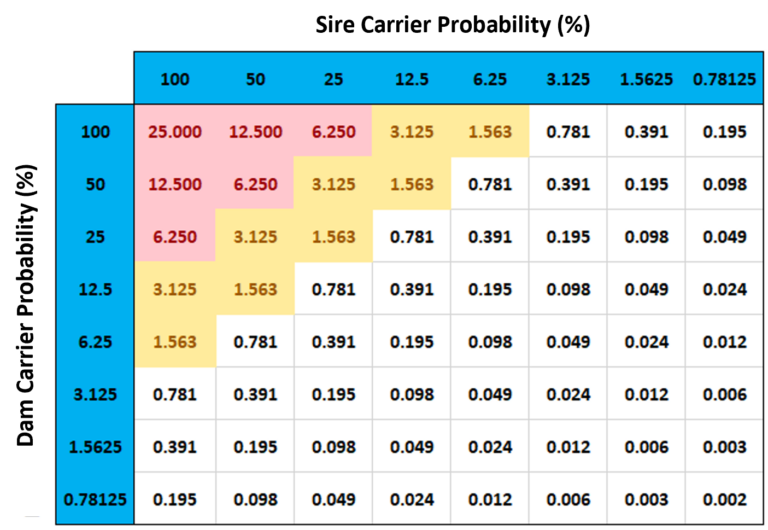
This is further explained with the example of a Holstein sire and several potential mates in Figure 2. The common genetic conditions for the Holstein breed are across the top. The sire’s Carrier Probability is 100% for Cholesterol Deficiency (CD), Brachyspina (BY), and Holstein Haplotype 2 (HH2). Cow 7 is a carrier for two other haplotypes, HH5 and HH6, and therefore the resulting pregnancy or calf has a 0% chance of being affected by any of CD, BY, HH2, HH5, or HH6. Cow 8 on the other hand, has a Carrier Probability of 25% for BY as well as three other undesirable conditions that are not in common with the mating sire. Using the tolerance threshold table in Figure 2 we can see that the resulting mating risk is 6.25%, meaning the resulting offspring of this sire and dam combination has a 6.25% of being affected by BY. Cow 9 is a carrier for HH2 (100%) and has 50% chance of being a carrier for CD. Since the sire is also a carrier for both conditions, the offspring has a 25% chance of being affected for HH2 and 12.5% chance of being affected for CD. The risk that the offspring is affected by at least one of these conditions is not the sum of the two probabilities but is rather 34.4% based on statistic probabilities.
Figure 2: Mating Risk Examples

Summary
As managing genetic recessives and haplotypes becomes an ever-growing precedence amongst the dairy industry, Lactanet has introduced two new features to its suite of genetic tools. The implementation of a pop-up box to the Animal Query pages and Inbreeding Calculator provides producers quick access to gene test results and Carrier Probability values. Additionally, enhancements to the Inbreeding Calculator allows producers to view mating risks to reflect the probability of genetic abnormalities and haplotypes in offspring while simultaneously viewing pedigree inbreeding levels and parent averages. Through these initiatives, Lactanet continues to play a pivotal role in shaping the future of dairy genetics, developing innovative solutions and tools to support dairy producers.





